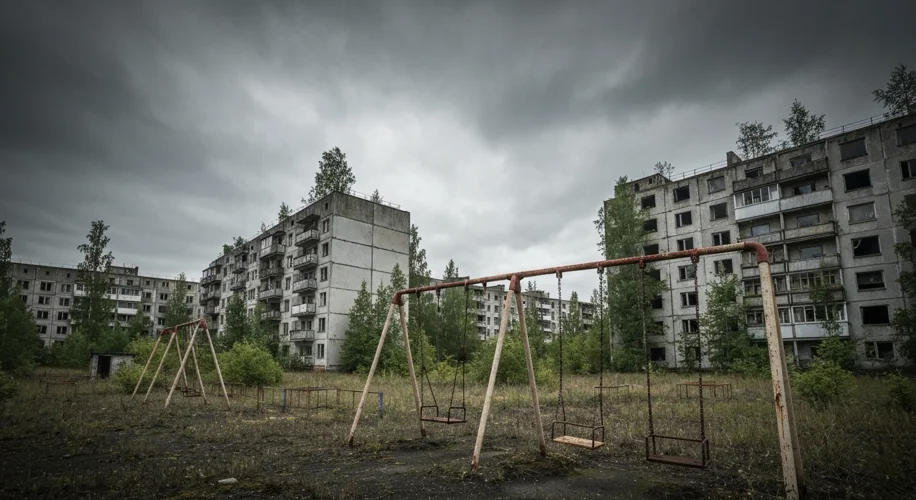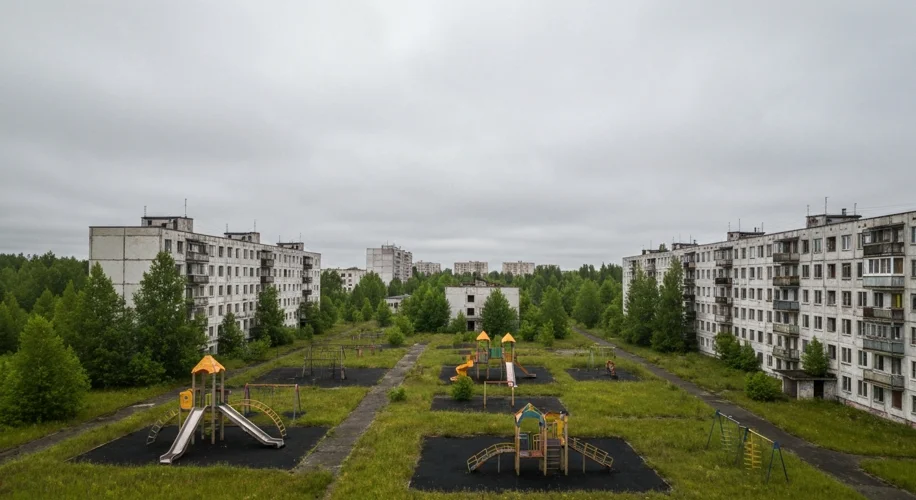The night of April 26, 1986, began like any other in Pripyat, a city built for the workers of the Chernobyl Nuclear Power Plant. But within the sterile confines of Reactor No. 4, a catastrophic test was underway, a confluence of human error and flawed design that would unleash a toxic fury upon the world. The resulting explosion and fire spewed radioactive isotopes across Ukraine, Belarus, Russia, and far into Europe, leaving behind a legacy of fear, illness, and a deeply fractured Soviet Union.
For years, the Soviet Union, a colossus built on the foundations of ideology and state control, had projected an image of invincibility. Yet, beneath the veneer of progress, cracks were beginning to show. The Soviet economy, burdened by the arms race and inefficient central planning, was stagnating. Dissatisfaction simmered among the populace, suppressed by a pervasive state security apparatus.
Into this volatile landscape, Chernobyl erupted like a radioactive volcano. The immediate aftermath was a testament to the Soviet system’s dual nature: acts of incredible bravery by firefighters and plant workers, many of whom paid the ultimate price, juxtaposed with a desperate, almost pathological, attempt by the government to control information and downplay the disaster’s severity. For three agonizing days, Soviet officials remained silent, leaving the people of Pripyat and the surrounding regions in the dark as the invisible killer spread through the air.

When the truth finally began to surface, it was not through an official admission but through the detection of radiation in Sweden, thousands of miles away. This external revelation was a profound humiliation for Moscow, exposing the sheer scale of the cover-up and the system’s inability to manage its own catastrophic failures. Mikhail Gorbachev, who had risen to power just over a year earlier with promises of glasnost (openness) and perestroika (restructuring), found his reform agenda severely tested. The Chernobyl disaster became a stark, terrifying symbol of the Soviet system’s inherent dangers and its deep-seated lack of transparency.
Critics often point to the prolonged war in Afghanistan (1979-1989) as the primary drain on Soviet resources and morale, a “bleeding wound” that contributed to its eventual collapse. While the Afghan War was undoubtedly a significant factor, Chernobyl arguably delivered a more devastating blow to the Soviet Union’s legitimacy and public trust. The war was a military quagmire; Chernobyl was a betrayal of the people by their own government, a failure on a fundamental, existential level.
Unlike the Afghan War, which could be framed by some within the Soviet system as a necessary internationalist duty or a proxy conflict against Western influence, Chernobyl was an internal catastrophe. It directly impacted Soviet citizens, exposing them to lethal doses of radiation and revealing the profound disconnect between the state’s pronouncements of scientific advancement and the grim reality of its nuclear infrastructure. The disaster amplified existing fears about the safety of Soviet technology and the trustworthiness of its leaders.
In the years following the disaster, the economic costs were staggering. Billions were spent on containment, cleanup, and the relocation of hundreds of thousands of people. These expenditures, on top of the already strained Soviet economy, further crippled its ability to function. More importantly, the psychological impact was immense. The unreliability of the state, the disregard for human life, and the sheer scale of the environmental devastation eroded any remaining faith many citizens had in the Communist Party’s ability to govern effectively.
Chernobyl became a rallying cry for environmental movements and a potent symbol of the human cost of unchecked industrial ambition coupled with authoritarian control. It fueled dissent, emboldened critics, and provided undeniable evidence for those who argued that the Soviet system was fundamentally unsustainable and dangerous. The disaster, in essence, pricked the balloon of Soviet exceptionalism, revealing a system that was not only flawed but profoundly dangerous to its own people.
While the Soviet Union did not collapse overnight as a direct result of Chernobyl, the disaster acted as a powerful accelerant, exacerbating existing weaknesses and hastening its inevitable demise. It undermined the ideological narrative, shattered public trust, and placed an unbearable economic burden on an already faltering system. The long shadow of Chernobyl stretched across the USSR, a constant reminder of its failures and a contributing factor to the profound societal and political shifts that would, within just a few years, lead to the dissolution of the Soviet Union.

